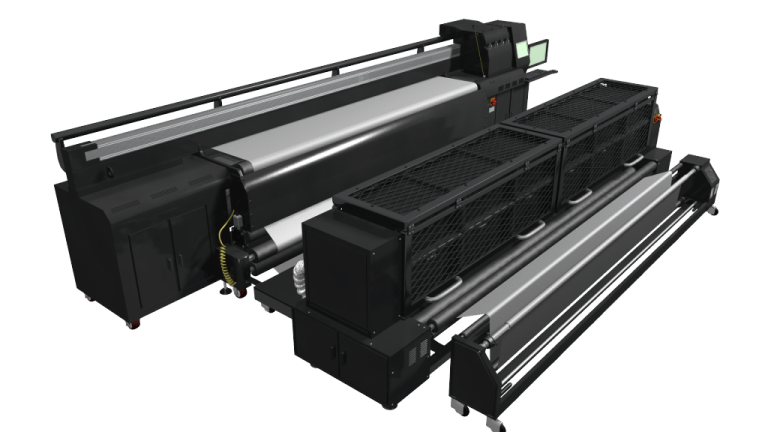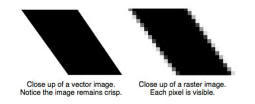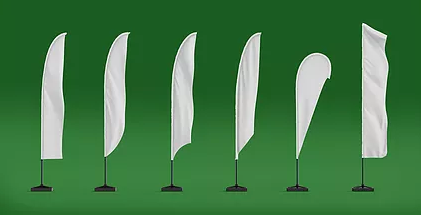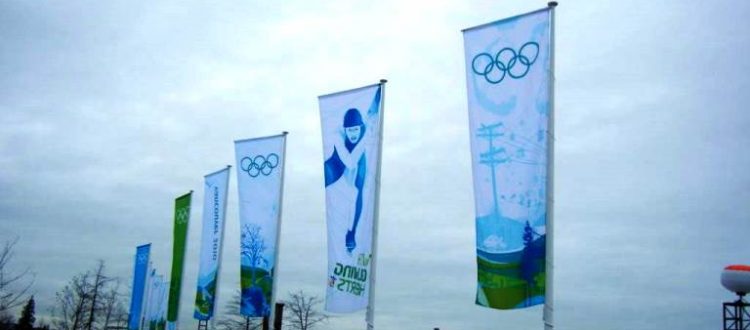A flag banner wholesaler, with the inclusion of mounting systems, such as hanging hardware, pole banner hardware, and poles that display feather banners, teardrop banners, and flag banners, to name a few, is a company that can sell to a protected dealer market, or sell at wholesale pricing to any category of client – typically businesses – that they choose to sell to or through.
What is a flag banner wholesaler?
Traditionally, in the US, a wholesaler was a company that might specialize in a few products within a narrow category, say, banners or outdoor flags and the like, who would sell to resellers in specific markets, e.g. California, New York or Georgia, in “protected territories.” In other words, if you had the contract to sell banners from XYZ Banner Manufacturing in the state of Georgia, you could not sell to clients in California or any other state/territory, as assigned by XYZ Banner Manufacturing (a fictitious entity, by the way, as far as we know).
Other company’s, such as the fictitious ABC Banner Company, might sell wholesale to anyone who could prove to them that they had a resellers permit or license, such as a website that might sell nationwide or worldwide. This type of client would not have any territorial restrictions, and much of what is sold in the US today, especially if sources offshore, would be examples of this type of wholesale seller.
The last category, which has become very common in the last couple of decades, are companies who sell “wholesale to business,” to the exclusion of most private buyers (consumers). These companies have developed this type of “wholesaling” in response to ever increasing price pressure in their markets, and often source offshore to augment shrinking profit margins or simply as opportunistic and allegedly forward thinking resellers.
All wholesaler’s sell below consumer price levels, which is what the base definition of a wholesaler is, but as you can see, there are many variations on that business model, and it is up to the individual businesses to decide how to implement themselves in this type of market.
What is a warranty?
Wholesale Flag Banners rarely carry a warranty, which is a promise, in essence, to replace the banner if anything goes wrong with it.
What is the reason for the lack of warranty on such items?
Namely, because the seller has no control of how it is hung or displayed. If the banner is displayed indoors, they will never need a warranty if the product is made from quality polyester or polyvinylchloride (also known as PVC or just plain “vinyl”), and printed with top quality inks from Japan, the US, Germany, Italy, or Korea.
If the banners are displayed/installed out-of-doors, all bets are off due to the sun, wind, and other inclement weather conditions that the manufacturer/wholesaler has no control over.
Your best bet as a client is to make sure that the manufacturer of wholesale flags and banners uses the best polyester materials and nylon webbing reinforcing in the hems/seams in order to resist inclement weather conditions, although sunlight cannot be stopped and is the leading cause of deterioration in banner longevity, along with high winds.
Wholesaler License
How do you obtain a wholesaler license? It depends.
Our company, for instance, distributes for various manufacturers that do not issue wholesale contracts for protected territories, so there is no need for any type of licensing.
If a company issues “licensing” to protected territories, it is not a government stamp of approval saying that your company is a licensed wholesaler, per se, but as a company policy, you would be approved as a wholesale vendor for that company’s products and/or services.
Flag Banner Printing – Printing Method(s)
Some of our clients, at least those who like to know how things work, have asked about the processes used to print flags and banners, so here goes…
Unlike DTF (direct-to-fabric) printing, our printers use the “dye sublimation” printing method, which uses a CMYO dye set (that stands for Cyan-Magenta-Yellow-Clear) rather that the traditional CMYK (that stands for the same thing except the K is black whereas the O is clear, but they ultimately both end up black).
With direct printing, the banner flag is printed with a series of tiny ink dots which vary with color saturation. Using ink is a one step process, and can be done on both vinyl and fabric banners.
However, there is a difference with dye sublimation printing.

Dye sublimation works like this – using the aforementioned CMYO dye set, the digital printer is used to print a transfer paper with the desired image. The paper is matched up to the appropriately sized polyester fabric – which may be one of many weights and finishes from knits to poly silks to light box fabrics to outdoor “canvas” – then fed through heated rollers at about 400F at about 400 lbs. of pressure.
As the paper and fabric enter the heated and pressurized rollers, the dye on the paper (due to the heat) is converted to a gaseous dye, whilst the cells within the poly-fabric, simultaneously, open like a flower in the sun, and the dye infuses the cell with color, which then closes up with the color in the cells as the fabric cools.
This process is more akin to film developing than digital printing, as the heat and pressure combination create a continuous tone like a photograph rather than dots simulating continuous tones that is the process digital printing uses. The dye also has become integral to the fabric, and does not sit on top of the fabric as ink does (the appropriate inks do adhere to fabrics very well, but not the same method and in our opinion, slightly lower quality printing).
Do wholesalers send samples?
I can’t speak for other flag banner wholesalers, but I would think most will. We do.
It would be difficult to visualize the various materials available if you’re not familiar with them, so it would be unwise on our part not to send samples if requested.
We send out our most popular materials, twelve to be exact, to most clients. Slight variations in weight and finish of the fabrics are available as well, but most of our clients find what they need from the dozen samples we send out on request.
What size is the font on the banner?
Whatever size fits what you’re trying to accomplish, and will fit on the banner itself without appearing garish.
The better question will be, “what is the smallest type can be on a fabric banner?”
The answer, of course, will vary per material. A polysilk banner flag, for instance, features a very tight weave, so can handle 8pt type, whereas canvas outdoor flag banners would be more likely to have a minimum letter height of at least a quarter of an inch.
If perforated vinyl cheap banners are used, we would recommend that one inch be the min. letter height.
Can I, as the client, choose the type of advertising feather flags material my design is printed on?
Absolutely! We can make recommendations for the material that would best fit your usage, but after you view our sample book, the choice is 100% yours.
With feather flags or other “pole banners,” you can use light weight material (which can be seen from both sides – but in reverse on the 2nd side), or you can have a double sided print with a “silver blockout” layer between the sides to virtually eliminate shadowing from the other side.
There are some fabrics we don’t recommend for this usage, such as polysilk, but if the feather or flag or teardrop banner were to be used indoors, even that would be an available choice.
What colors are available for DTF or dye sub printing?
With DTF printing, direct-to-fabric (or DTS, direct-to-substrate including vinyl banners if you shop for low prices on banners), there are the basic 4-color process printing colors which can be combined to create full color printing, with some printers adding “booster colors” such as pink and light blue, to increase the color dynamics of the printing.
Dye sublimation, whether full color or spot color (such as outdoor American flags), uses the continuous tone printing – discussed in an earlier section – and therefore doesn’t need the booster colors.
So, either way, the sky is the limit on colors, either spot or four-color process printing. Prints requiring Pantone Matching System™ color matches (PMS matching) are also available on request.
Will the printed custom banner flag look exactly like the design displayed on my computer monitor?
In a word, no. Not exactly. But very close – better, actually.
Your computer monitor likely uses the RGB color spectrum – RGB stands for Red-Green-Blue – which is the color standard for digital media such as television, movies, cell phones, and computer monitors, and as such cannot be used for direct proofing.
If you need exact color matching, you can use a CMYK color code (for instance, black is 0-0-0-100), the Pantone Matching System™ as discussed in the last section, or the 6 digit/letter “hexachrome” code to specify the exact color you are trying to achieve. You will need color books to do this typically, which are available online or at your local offset printers’ shops.
Should I use DPI – or Pixels?
It depends on what you’re doing.
DPI stands for “dots per inch” (square inch), and Pixels, which are often denoted as PPI, or “pixels per inch.”
PPI is typically a digital notation depicting the number of square dots on your screen, such as the low resolution 72ppi of a .jpg file, and up to much higher screen resolution. Many websites have low resolution images because they take less digital space, but that image would make a terrible print.
DPI is a print notation that tells you how many round dots are being printed per inch, and most printed materials range from 300dpi to 1440dpi, although with continuous tone printing – in our case dye sublimation printing, 150-200 dpi printing is perfectly acceptable.
What Should I Use? Vector or Raster Print Files?
The absolute cleanest and smallest files are vector files. So, that is what we should use, right?
The answer is, “it depends.”

Vector vs. Raster
A vector file is an outlined file, which works great for letters and logos, but so far, not photographs or complicated half-tone graphics. A raster file is a bitmap, or square dot file (as discussed in the previous section on PPI/DPI).
If you take a file that has, for sake of illustration, the Starbucks logo and the words, “HIERBA MATE NOW AVAILABLE,” and you create a vector file for a 20 foot by 5 ft banner, it is likely that file size would be less than a megabyte (MB).
However, if you convert that file to a raster (bitmap) image, say 300 dpi, now that file is likely going to be many megabytes and much slower to transfer to your printer.
However, if you want to superimpose some pictures of the cup that the drink goes in with some mints or whatever, those would be raster images anyway, so why not rasterize the entire image as it will print well. It may be 100MB or more, but that is the nature of printing in the 21st century, and our computers and internet are able to handle large files, unlike back when I got into the business.
Flag Sizes and Custom Flag Banner Orders – What size flag should I buy?
Let me answer that by asking, “What size house should I build?”

The answer would depend on how many people are going to live in that house, is it for show or utility, etc.
Banner sizing is going to be determined by the usage, viewing distance, and artistic factors.
If it is being hung on a side of a building on a highway where drivers have a second to read the message, you need a huge banner display with huge letters and few words conveying your message.
That is why the billboard industry, which features standard sizes like 48 feet by 16 feet, is popular with businesses needing to advertise products and services.
If you have an art gallery, though, and want to impress potential clients that your gallery is an upscale clientele business where not just anyone can shop (i.e., it’s expensive), any and all advertising with fabric flag banners should be artistic and unassuming, i.e., much smaller than a billboard.
So usage will determine the sizing of your banners.
Are custom banner flags offered?
Not only so we offer those, as far as we’re concerned, customized designs are what we offer as a wholesale seller, both vinyl and cloth fabric banners. We don’t stock banners, but if your company needs hundreds of stock ones to sell to retail clients, we can certainly help.
Maintaining the Durability of the Flag Banners – How long will my flag last?
Predicting longevity is as varied as predicting what your two year old will grow up to be…it just depends a lot on the two year old as well as your family ethos.
I’ve seen outdoor flag banners last 15 years, and others 3 months. Much depends on how the banner is installed. The aforementioned display was a south facing banner, but was stretched tightly over a metal framed sign cabinet, so while it was in full sun (facing southwards), it had virtually no wind flap, and therefore lasted a long time.
The material and construction have a lot to do with longevity, but not as much as where and how it is hung.
Interior banners should last a decade or longer, unless in full sun, and even then, I’ve seen them last that long, and longer.
How can I clean my flag?
If it is made up of polyester fabric (as most of ours will be), you can throw it in the washer, then in the dryer on a medium heat (best not to fully dry the banner as it may be susceptible to wrinkling), then hang it fully dry. Easy as that.
If it is a vinyl banner, alcohol or a cleaning product such as 409 work well.
How can I wash my printed fabric products?
See the previous answer.
How long do outside products last under the sun?
As noted a couple sections back, it will depend on the material, how much sun, and how the banner flag is hung or attached.
What weather conditions can I use the outdoor displays in?
Pretty much any weather condition, although excessive winds and excessive sun will reduce the life of the banner significantly.
What can I use to display/hold my banner?
There are many stand types such as poles for feather, flag, and teardrop banners, X-banners, retractable or roll-up or pull-up banner stands, banner walls, pop-up displays, and more available.
You can hang them with poles (using a sewn in pole pocket), flags on flag poles, affix them to walls with mechanical fasteners, and even hang giant ones on the side of a skyscraper.
The Warranty of Wholesale Flag Banners
Rarely do they have any sort of a warranty.
Why is this?
Wholesalers have no control of how, where, or when the flag banner is installed. Indoor banners don’t need a warranty, if printed with top quality inks from Japan, the US, Germany, Italy, or Korea.
Outdoor banners simply have no warranty as the seller has no control of how they’re hung, the weather, or other factors.
Of course, using nylon webbing in the hems reinforces the easier parts of the banner to tear out, and ropes sewn in are also appropriate in some installations, as are cable, but still, the weather can chew up even the best constructed ones.
For custom printed wholesale flag banners, visit this page. The fabric is made from polyester and the graphics are printed through dye sublimation printing as discussed above. You can be sure to wash your banner from time to time without worrying on getting the prints to fade, as the dyes are permanently embedded on the fabric.
Popular Posts:




